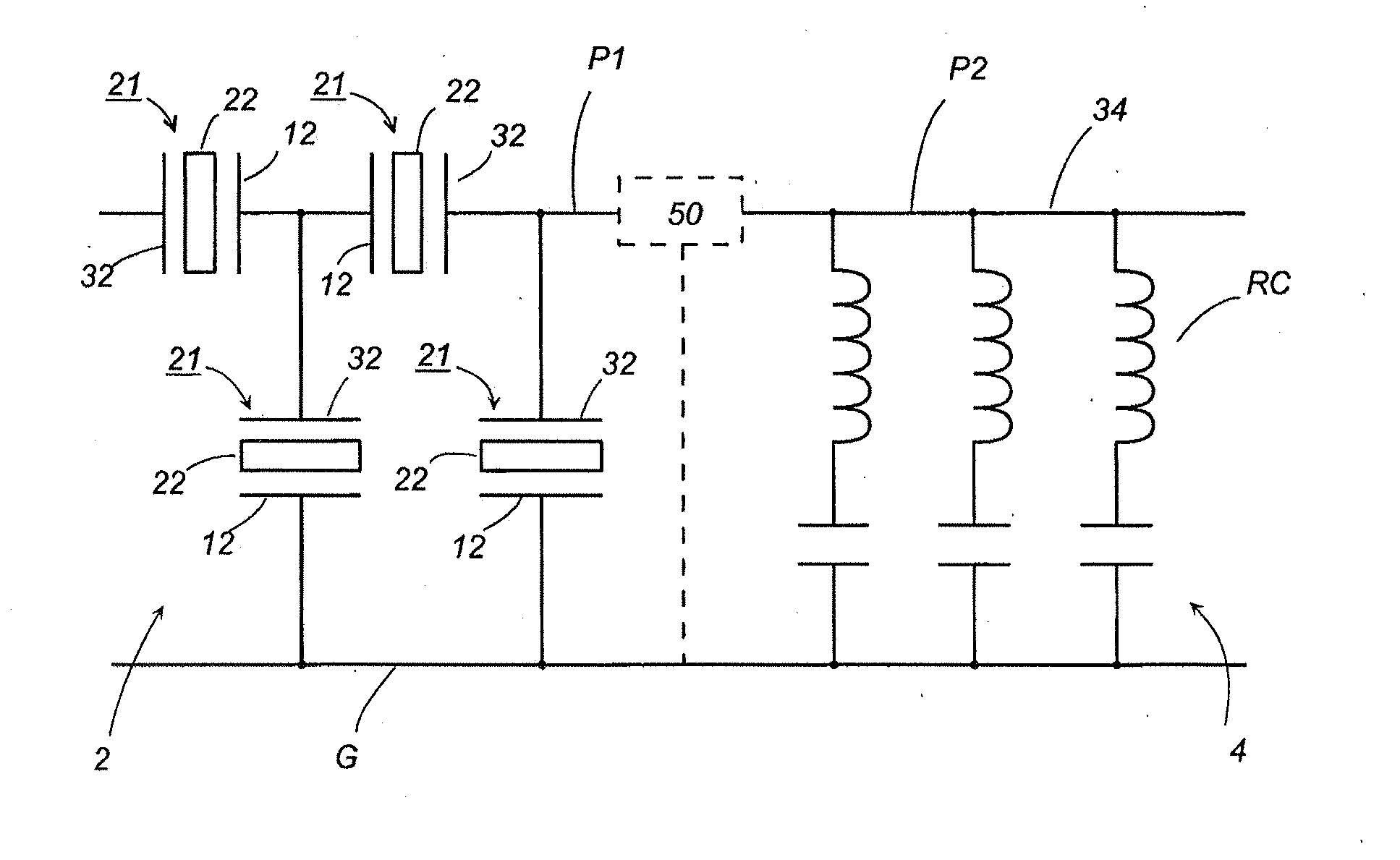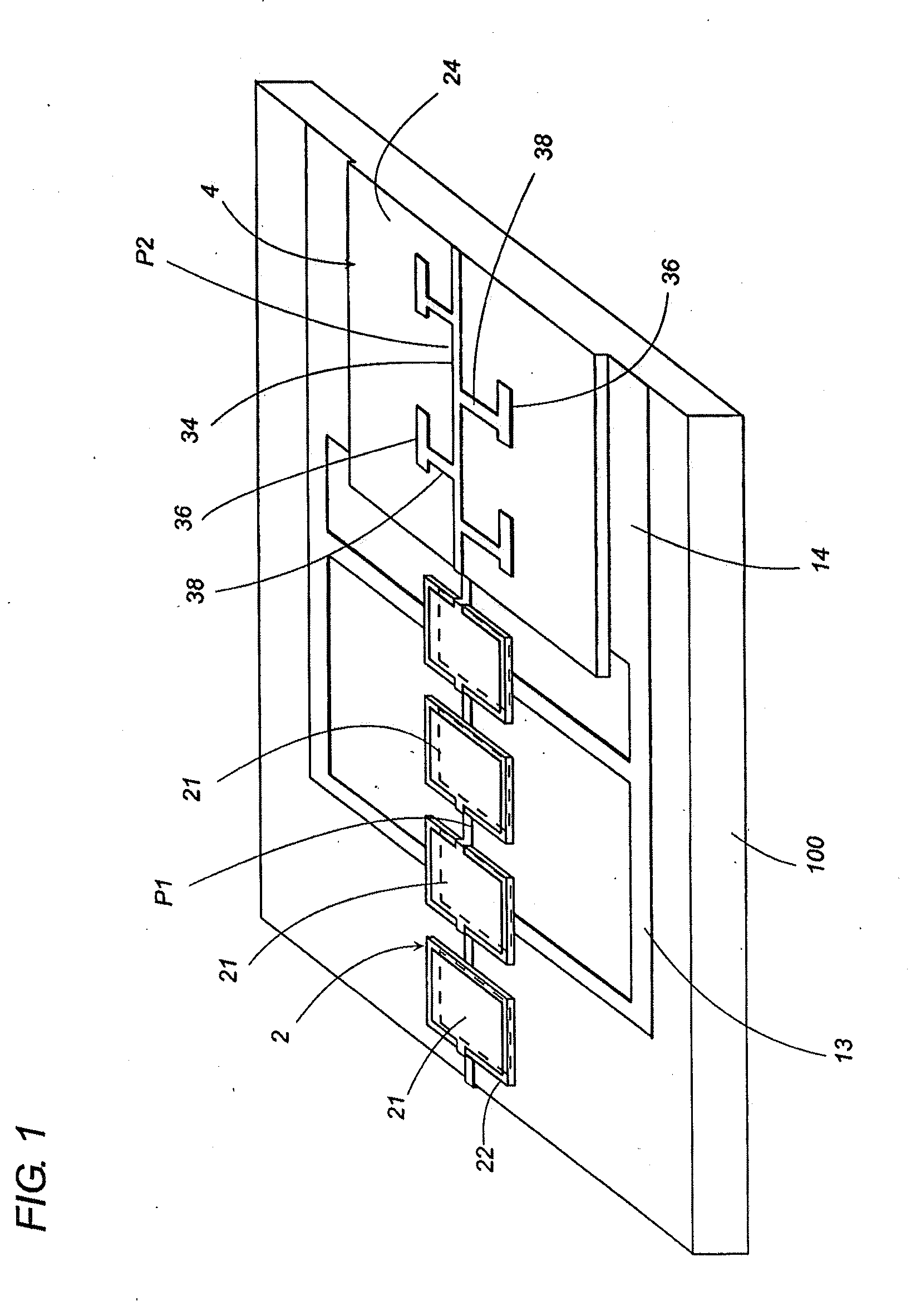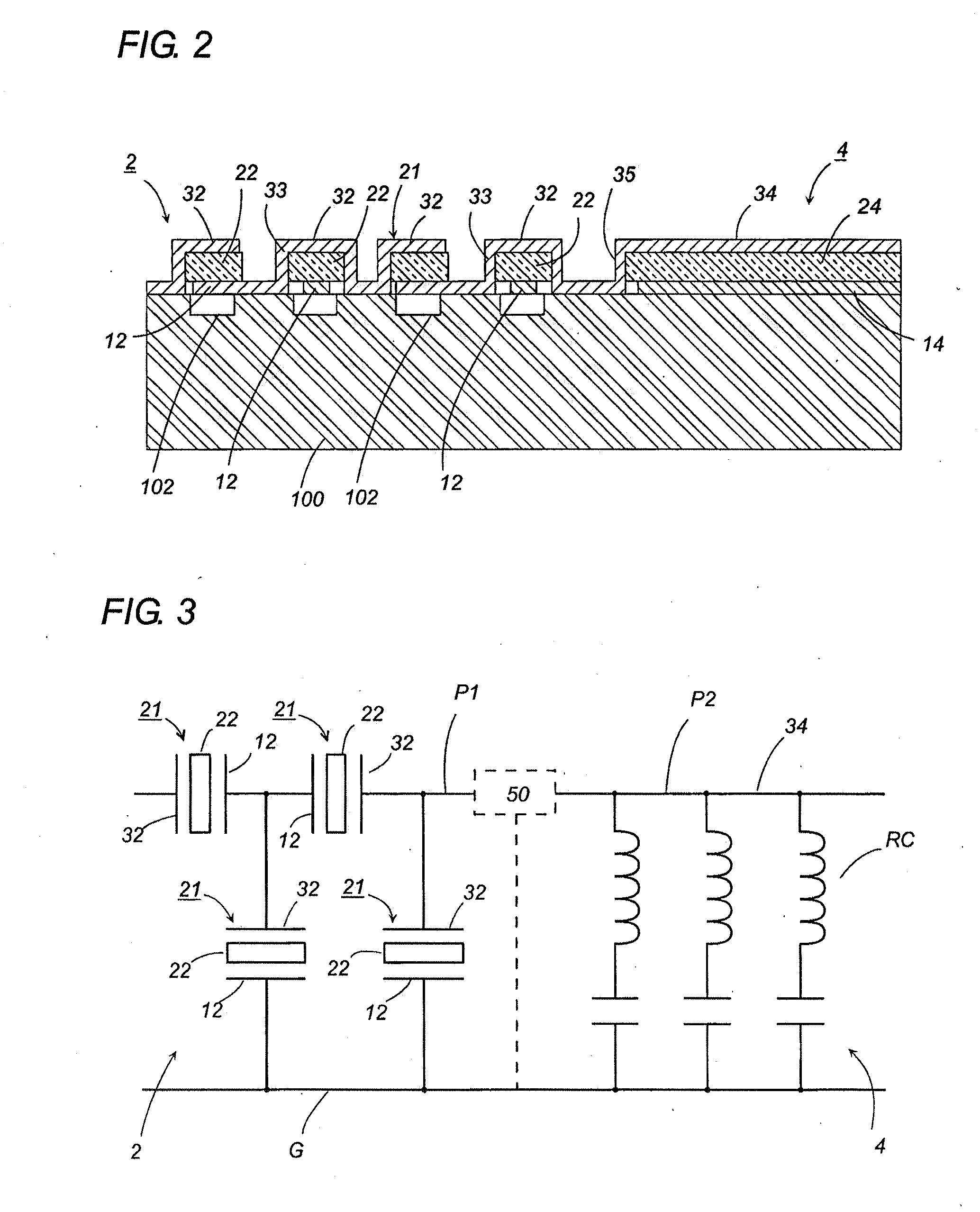Bandpass filter and process of fabricating the same
a filter and bandpass technology, applied in the field of bandpass filters, can solve the problems of not being suitable for incorporation into a miniaturized device, ring resonators occupying a relatively large space, and likely to pass undesired frequency or fail to attenuate undesired frequency, and achieve excellent out-of-band rejection, sharp and wide bandpass, and improved near-band rejection.
- Summary
- Abstract
- Description
- Claims
- Application Information
AI Technical Summary
Benefits of technology
Problems solved by technology
Method used
Image
Examples
Embodiment Construction
[0026]Referring now to FIGS. 1 and 2, there is shown a bandpass filter in accordance with a first embodiment of the present invention. The bandpass filter is designed for use in the ultra-wide band (UWB) application to have a bandpass in a frequency range of 3.5 GHz to 3.9 GHz, for example. The bandpass filter is a combination of a bulk acoustic wave (BAW) filter 2 and a planar patterned filter 4 which are formed on a common substrate 100 which is made of a semiconductor material of silicon, for example.
[0027]The BAW filter 2 includes a plurality of film bulk acoustic piezoelectric resonators 21 each composed of a piezoelectric element 22 disposed between a lower electrode 12 and an upper electrode 32. The resonators 21 are connected in a ladder configuration, as shown in FIG. 3, between a first signal transmission path P1 and a ground to provide the bandpass of the frequency. The substrate 100 is formed in its top surface with a plurality of cavities 102 disposed in closely adjacen...
PUM
| Property | Measurement | Unit |
|---|---|---|
| relative dielectric constant | aaaaa | aaaaa |
| frequency | aaaaa | aaaaa |
| frequency | aaaaa | aaaaa |
Abstract
Description
Claims
Application Information
 Login to View More
Login to View More - R&D
- Intellectual Property
- Life Sciences
- Materials
- Tech Scout
- Unparalleled Data Quality
- Higher Quality Content
- 60% Fewer Hallucinations
Browse by: Latest US Patents, China's latest patents, Technical Efficacy Thesaurus, Application Domain, Technology Topic, Popular Technical Reports.
© 2025 PatSnap. All rights reserved.Legal|Privacy policy|Modern Slavery Act Transparency Statement|Sitemap|About US| Contact US: help@patsnap.com



